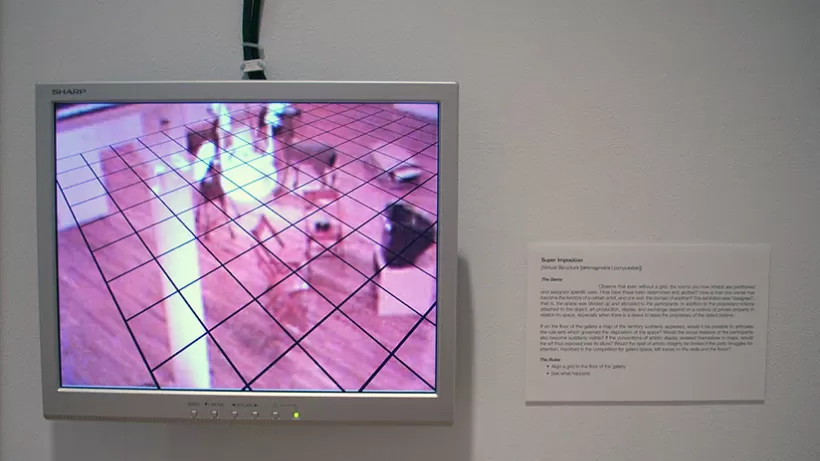Observe that even without a grid, the rooms you now inhabit are partitioned and assigned specific uses. How have these been determined and allotted? How is that one corner has become the territory of a certain artist, and one wall, the domain of another? This exhibition was "designed"; that is, the space was divided up and allocated to the participants. In addition to the proprietary notions attached to the object, art production, display, and exchange depend on a notions of private property in relation to space, especially when there is a desire to leave the proprietary of the object behind.
If on the floor of the gallery a map of the territory suddenly appeared, would it be possible to articulate the rule sets which governed the disposition of the space? Would the social relations of the participants also become suddenly visible? If the conventions of artistic display revealed themselves in maps, would the art thus exposed lose its allure? Would the spell of artistic integrity be broken if the petty struggles for attention, inscribed in the competition for gallery space, left traces on the walls and the floors?
We take convention for necessity. We feel as if we have arrived organically at the most natural, necessary and logical of all schemes. We manage to accommodate the wildly divergent and individualistic projects that we dream up when we are apart. And then we experience the warm feeling of easy camaraderie when we display the fruits of our labor together, harmoniously. These are the minimum conditions of legibility for our practice: empty space, a room of ones own–uncontaminated, unmarked, uninhabited–like the pre-colonial condition of the other world, ready to receive its new kings. Until the arrival of the artist, the space of exhibition is completely devoid of any trace of its social, political, or material entanglements. (It is as if the experiments of Haake, Buren and the others–the decades of institutional critique–had never happened.)
So there are no grids; the borders seem soft and inexact (except for the rooms and the doors). If there were grids, their geometry would seem confining rather than utopian: the most primitive, least imaginative and most carceral arrangement of lines able to form discrete spaces. Why suggest this hyperbolic reenactment of the enclosure of the commons? Why insist that the social relations which govern the distribution of resources be symbolically played out through exchange? Why violate the "rights" of the other participants by denying them the basic conditions of intelligibility for their practice?
Simply because: there is no empty space.
The Rules
- Align a grid to the floor of the gallery.
- See what happens.
